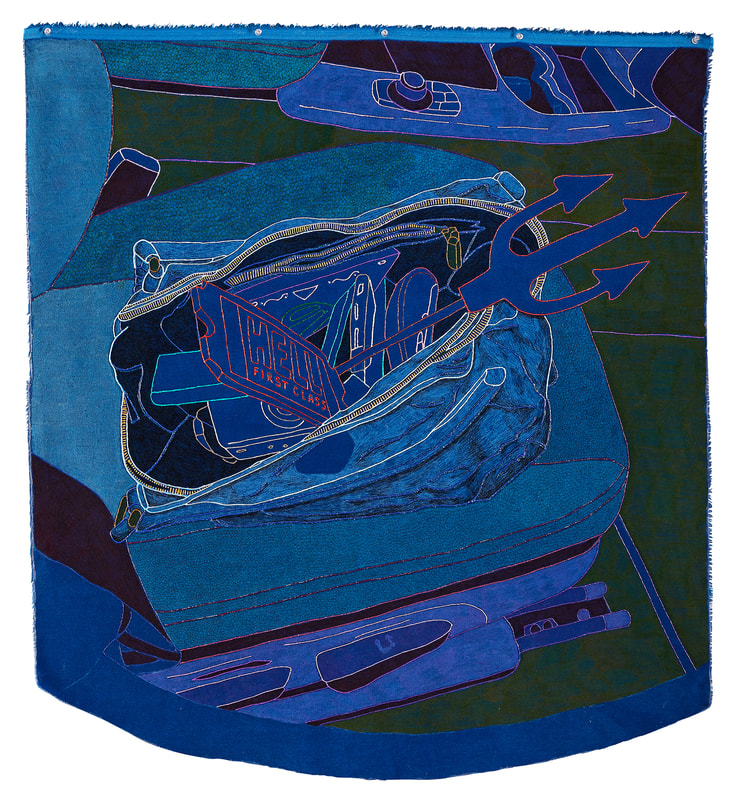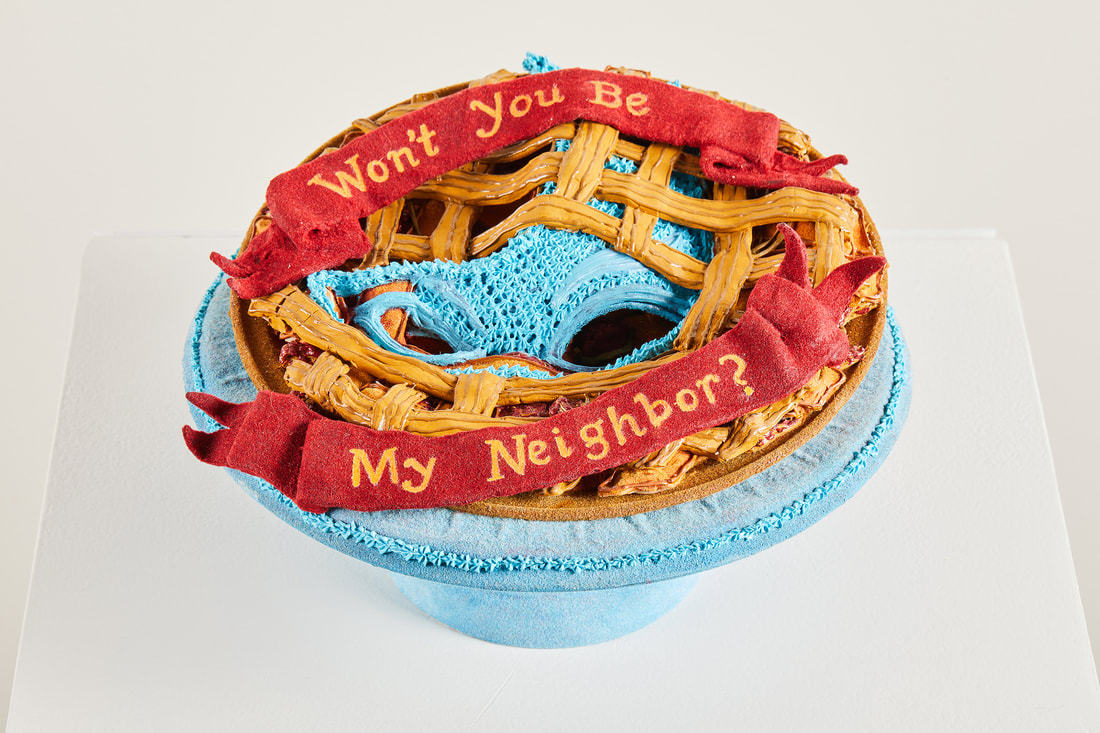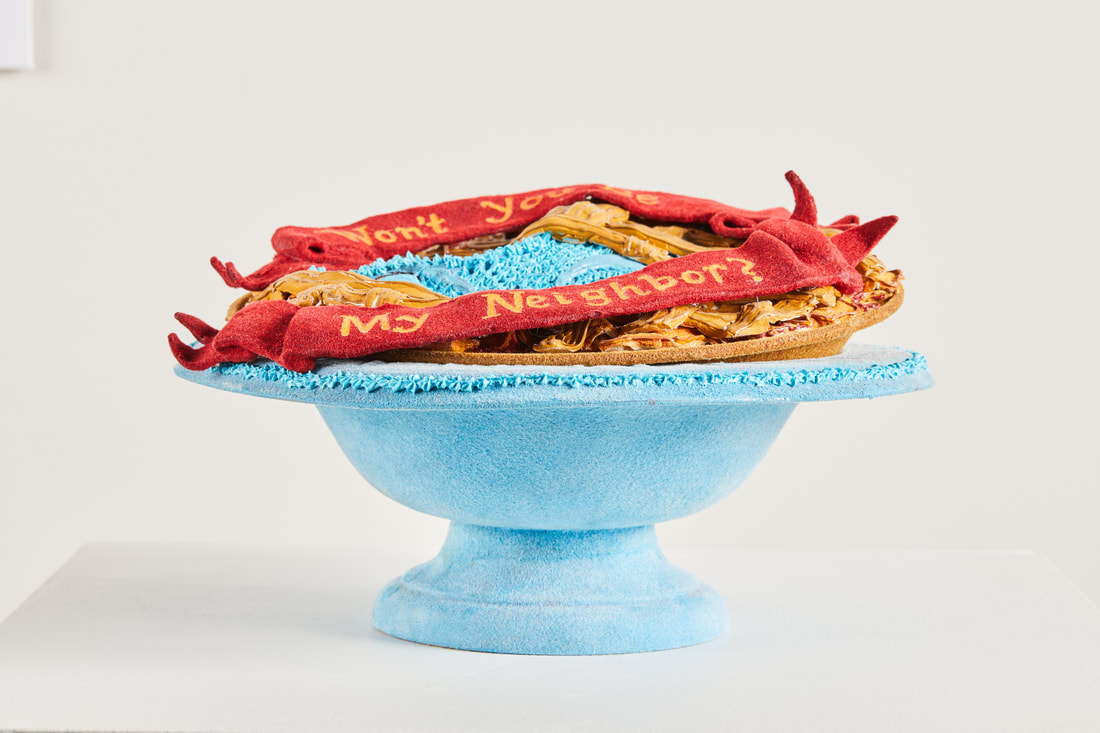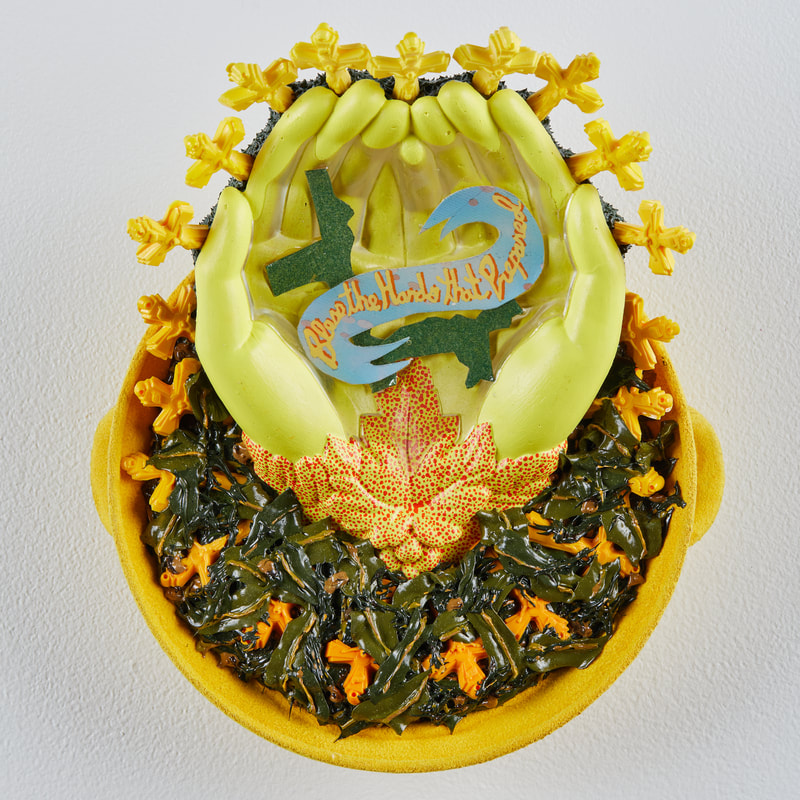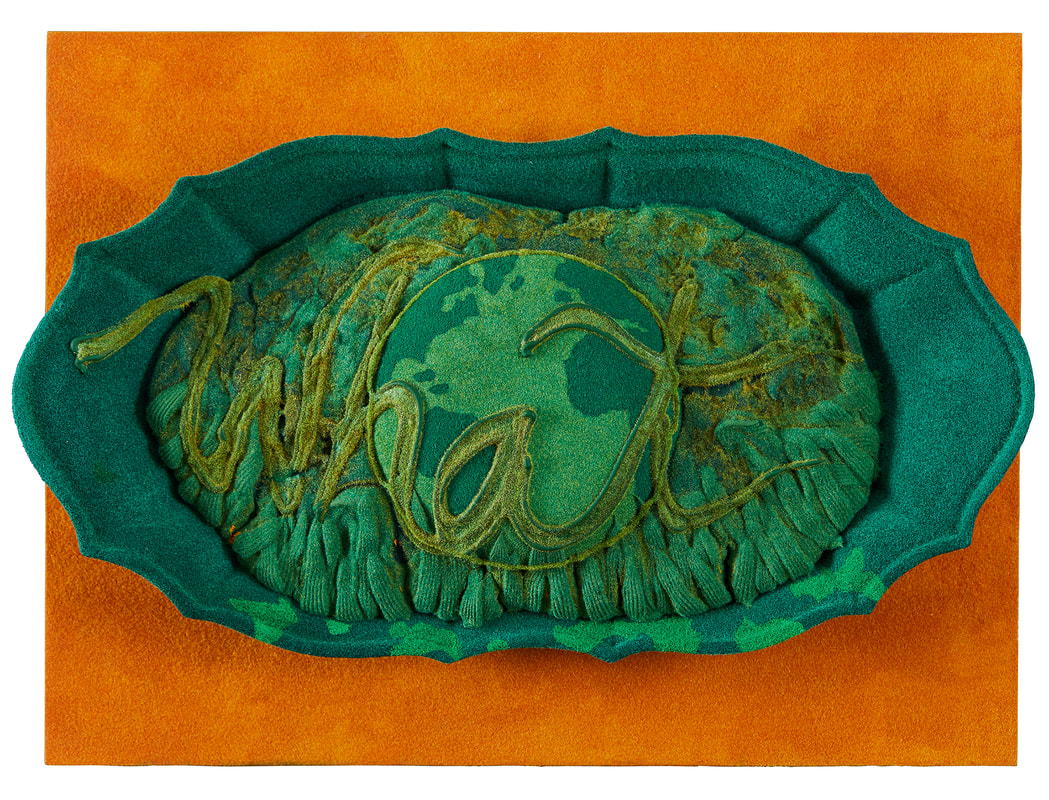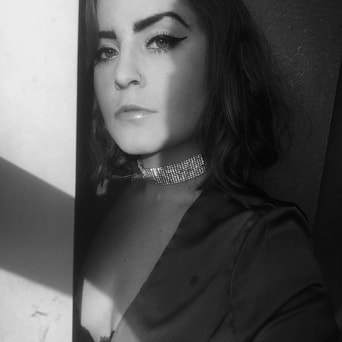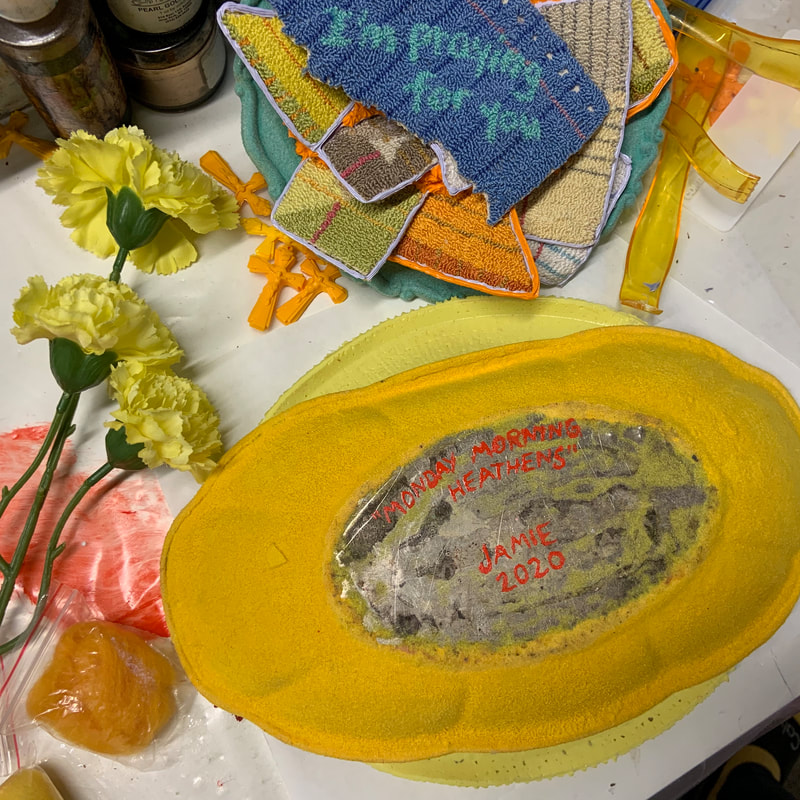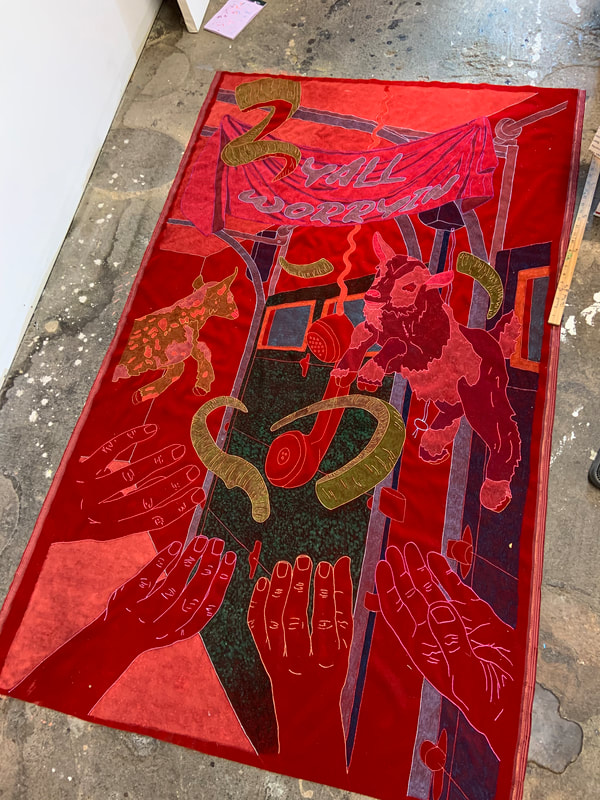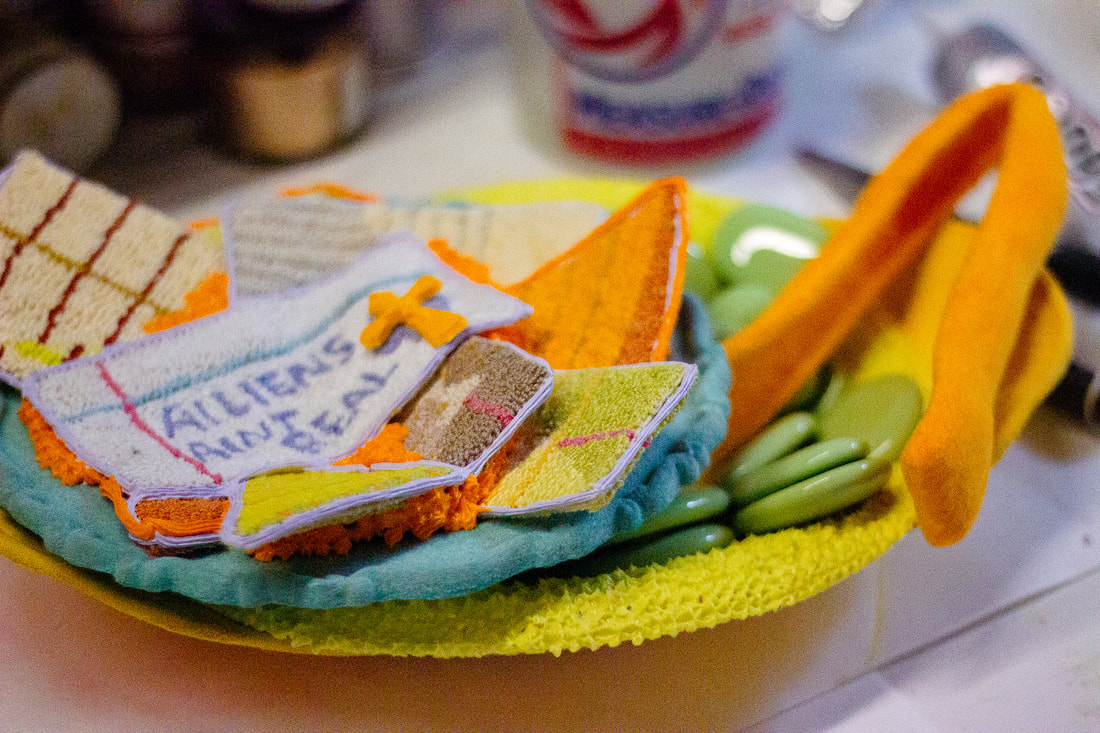Jamie Earnest is from Alabama and received her BFA from Carnegie Mellon's School of Art. In 2016, her work was featured at The Andy Warhol Museum. Jamie had her debut solo exhibition at Cindy Lisica Gallery in Houston in 2016. Since then, she has had an additional three solo exhibitions of her work in Alabama and Pennsylvania. She has shown multiple group shows in Pittsburgh, New York, Boston, Texas, Colorado, Alabama and Suzhou, China. In 2019, she received a fellowship from the Vermont Studio Center and was accepted to the Brewhouse Distillery Emerging Artist Residency for 2019-2020. "My work aims to examine the contrasts of altruism and polarization in the south. From ideas of southern superstitions to the communal value of food, to the values of religion and family, these works take recognizable, domestic symbols and tie them together with dark realms of the uncanny. Though these are enticing and familiar painting and objects, something eerie exists in each of them – this is the uneasy, the learned fear, and the judgement that influences the true nature of altruistic hospitality in the south."
Published on May 25th, 2021. Artist responses collected in months previous.
What hurdles have you overcome this year and how have they affected your art practice?
Painting and I broke up. It was hard to paint for awhile, I dreaded it. I was forcing myself to paint when, in reality, I was actually bored with it. In January of 2020, I did a residency at Vermont Studio Center. When I arrived, I made a conscious decision not to paint and to just experiment. I spent this residency learning to fail, honestly. From this residency I began experimenting with a variety of sculptural techniques and processes. It was a big step for me to overcome that fear of working on a body of artwork that I had no prior confidence in. Painting was my strong suit, my rock – it was really hard to abandon that and jump into something unfamiliar. I’m now focused on creating more sculptural objects. I had, and am still having, such a growing experience by taking a break from painting – both for my artistic practice and for myself. I think painting and I might get back together in the future but I’m waiting until she comes back to me.
How has your art practice been affected by the pandemic?
From March until May, I was denied access to my studio space due to quarantine. I had a solo exhibition lined up for April and two group exhibitions planned for May. Two of those exhibitions were subsequently postponed indefinitely. With nowhere to do my studio practice, I was worried about the stability of my mental health – which directly correlates with my ability to continue my creative practice. For a few months I was attempting to adapt by working on smaller fabric pieces in my apartment – but I wasn’t able to accommodate any of the sculptural processes I had been working on prior to the shutdown. In mid-April, a friend offered his basement as a place where I could continue my sculptural experiments. I was blessed to have a friend who was willing to support me and my practice during this time of uncertainty. As of June 2020, I am back in my studio space. The silver lining of the pandemic is that it is the perfect time for me to experiment - there are no upcoming exhibitions that I have to finish work for, and essentially nothing that is keeping me from using this time to just play.
What support systems have you put in place to help keep your practice thriving amidst these unforeseeable circumstances?
I’ve been blessed with a wonderful circle of friends and supporters who have been able to help my practice continue to thrive over the course of this pandemic. Friends who let me use their basement to create messy work, friends who helped me to move things out of my studio during the quarantine, and friends who have generously provided monetary support. My income has been astronomically affected due to the lack of exhibitions and opportunities to show and sell work. My artistic practice is about 40% of my income, in addition to a part-time job. With these losses, I’ve been looking for ways to make up that lost income this year. I am aware that I am not the only artist in my community who is experiencing this. Local arts organizations, former classmates, mentors, and fellow artists in the Pittsburgh community have all been incredibly resourceful and openly sharing opportunities for artists to generate some income. From pay-what-you-can virtual artist talks, low cost printing, emergency funding programs and sharing each other’s work across state lines – the community here has stepped up for each other.
What methods do you employ to stay resilient in your art practice? What tips would you recommend to other artists who find staying resilient difficult?
This pandemic has reignited the power of technology as a tool to easily communicate with those who are not physically close to us. During normal times, I am always in conversation with my local artist peers about our practices, sharing techniques and materials with one another, critiquing each other, and creating dialogue together in ways where we are all learning from one another. This is typically what keeps me going in my practice – it has always helped me to speak out loud, to literally think out loud with someone else when navigating my practice. This pandemic has sparked a sense of checking in on and keeping in touch with one another – specifically across the country and the entire world. This allowed me to get back in touch with former artist peers from various programs and residencies to create a dialogue born out of questioning and searching – searching for how to navigate these times as an artist. I found myself turning to these peers to share my own struggles, listen to their struggles, and brainstorm how we can pull each other out of it.
What have you learned about yourself as an artist this year?
The most valuable thing is that over this last year, I’ve learned to embrace failure with open arms. With failure comes knowledge, experience, and the birth of new ideas. Failure is something I had previously and secretly feared. I never fully accepted failure and worked myself through it until my head hurt and my hands were left raw. I feel that I have overcome the fear of failure and the act of ‘failing’. Whether failure is screwing up proportions on a new casting material, breaking a plaster sculpture I had been slaving over, or creating something just to completely scrap it and start over – I have learned the value that comes with those seemingly frustrating experiences and have begun to see the growth that comes with it. The embrace of failure has ultimately become the source of my motivation to continue working through my break up with painting as I embark on utilizing new materials.
What hurdles have you overcome this year and how have they affected your art practice?
Painting and I broke up. It was hard to paint for awhile, I dreaded it. I was forcing myself to paint when, in reality, I was actually bored with it. In January of 2020, I did a residency at Vermont Studio Center. When I arrived, I made a conscious decision not to paint and to just experiment. I spent this residency learning to fail, honestly. From this residency I began experimenting with a variety of sculptural techniques and processes. It was a big step for me to overcome that fear of working on a body of artwork that I had no prior confidence in. Painting was my strong suit, my rock – it was really hard to abandon that and jump into something unfamiliar. I’m now focused on creating more sculptural objects. I had, and am still having, such a growing experience by taking a break from painting – both for my artistic practice and for myself. I think painting and I might get back together in the future but I’m waiting until she comes back to me.
How has your art practice been affected by the pandemic?
From March until May, I was denied access to my studio space due to quarantine. I had a solo exhibition lined up for April and two group exhibitions planned for May. Two of those exhibitions were subsequently postponed indefinitely. With nowhere to do my studio practice, I was worried about the stability of my mental health – which directly correlates with my ability to continue my creative practice. For a few months I was attempting to adapt by working on smaller fabric pieces in my apartment – but I wasn’t able to accommodate any of the sculptural processes I had been working on prior to the shutdown. In mid-April, a friend offered his basement as a place where I could continue my sculptural experiments. I was blessed to have a friend who was willing to support me and my practice during this time of uncertainty. As of June 2020, I am back in my studio space. The silver lining of the pandemic is that it is the perfect time for me to experiment - there are no upcoming exhibitions that I have to finish work for, and essentially nothing that is keeping me from using this time to just play.
What support systems have you put in place to help keep your practice thriving amidst these unforeseeable circumstances?
I’ve been blessed with a wonderful circle of friends and supporters who have been able to help my practice continue to thrive over the course of this pandemic. Friends who let me use their basement to create messy work, friends who helped me to move things out of my studio during the quarantine, and friends who have generously provided monetary support. My income has been astronomically affected due to the lack of exhibitions and opportunities to show and sell work. My artistic practice is about 40% of my income, in addition to a part-time job. With these losses, I’ve been looking for ways to make up that lost income this year. I am aware that I am not the only artist in my community who is experiencing this. Local arts organizations, former classmates, mentors, and fellow artists in the Pittsburgh community have all been incredibly resourceful and openly sharing opportunities for artists to generate some income. From pay-what-you-can virtual artist talks, low cost printing, emergency funding programs and sharing each other’s work across state lines – the community here has stepped up for each other.
What methods do you employ to stay resilient in your art practice? What tips would you recommend to other artists who find staying resilient difficult?
This pandemic has reignited the power of technology as a tool to easily communicate with those who are not physically close to us. During normal times, I am always in conversation with my local artist peers about our practices, sharing techniques and materials with one another, critiquing each other, and creating dialogue together in ways where we are all learning from one another. This is typically what keeps me going in my practice – it has always helped me to speak out loud, to literally think out loud with someone else when navigating my practice. This pandemic has sparked a sense of checking in on and keeping in touch with one another – specifically across the country and the entire world. This allowed me to get back in touch with former artist peers from various programs and residencies to create a dialogue born out of questioning and searching – searching for how to navigate these times as an artist. I found myself turning to these peers to share my own struggles, listen to their struggles, and brainstorm how we can pull each other out of it.
What have you learned about yourself as an artist this year?
The most valuable thing is that over this last year, I’ve learned to embrace failure with open arms. With failure comes knowledge, experience, and the birth of new ideas. Failure is something I had previously and secretly feared. I never fully accepted failure and worked myself through it until my head hurt and my hands were left raw. I feel that I have overcome the fear of failure and the act of ‘failing’. Whether failure is screwing up proportions on a new casting material, breaking a plaster sculpture I had been slaving over, or creating something just to completely scrap it and start over – I have learned the value that comes with those seemingly frustrating experiences and have begun to see the growth that comes with it. The embrace of failure has ultimately become the source of my motivation to continue working through my break up with painting as I embark on utilizing new materials.
Find Jamie Earnest on Instagram
